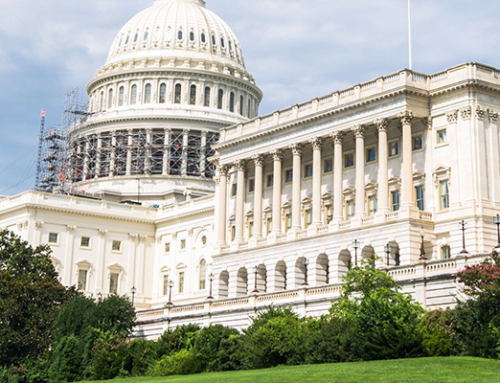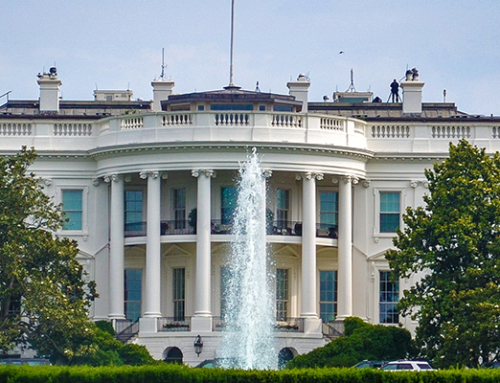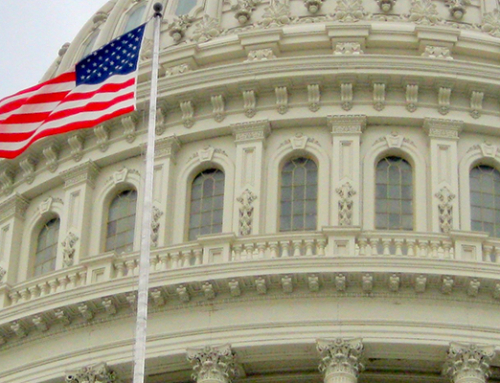Recent discussions on Capitol Hill and with the Trump administration indicate that the outline of the paid child care proposal released during the campaign is being seriously proposed. A recent article in Bloomberg described some recent discussions.
Background
The Child Care proposal that was posted during the campaign provided for a series of tax credits and exclusions to assist in covering the costs associated with child care. One of the list of items would “enhance Unemployment Insurance (UI) to include 6 weeks of paid leave for new mothers so that they can take time off of work after having a baby.” The proposal assumes that new mothers currently receive the average of 2 weeks of paid leave. The plan specifics posted on line included:
The Trump plan will enhance Unemployment Insurance (UI) to include 6 weeks of paid leave for new mothers so that they can take time off of work after having a baby. This would triple the average 2 weeks of paid leave received by new mothers, which will benefit both the mother and the child. Providing a temporary unemployment benefit for eight weeks through the UI system would cost $2.5 billion annually at an average benefit of $300 per week. This cost could be offset through changes in the existing UI system, such as by reducing the $5.6 billion per year in improper payments or implementing the proposals included in the administration’s FY 2017 budget regarding program integrity. Providing the benefit through UI—paid for through program savings—will not be financially onerous to small businesses when compared with mandating paid leave. An analysis of a similar program in California has shown that unmarried, nonwhite, and non-college educated mothers receive the most benefit. The Trump plan for paid maternity leave will advance the interests of disadvantaged mothers without raising taxes.
The proposal is similar to administrative interpretations during the Clinton administration that would have permitted states to use the unemployment compensation system to pay for family leave. The Clinton administration interpretation was reversed during the subsequent Bush administration. The California program referenced in the campaign posting does not use funds from the state Unemployment Trust Fund. There are a number of features of the proposal that raise UI tax, benefit and program concerns.
The proposal would increase UI taxes and costs for all employers
A federally mandated increase of 6 weeks of benefits for “new mothers who take time off after having a baby” would increase amounts paid from state unemployment trust fund accounts. If these payments are charged to employer experience rated accounts as regular benefits, all employers in most states (typically charging based on proportion of base period wages) would receive increased benefit charges resulting in increases in experience based contribution rates under state law. Employers that did not have paid child care leave and those that did have paid child care leave would all be charged for benefits. Reimbursing employers would be charged in most states on a pro-rata basis and be required to reimburse the fund.
To the extent that increased payout due to the new federally required child care payments reduced the balance in a state unemployment trust fund in most states the contribution rates for all contributing employers would be increased to restore solvency over time.
The proposal would reduce funds available for regular unemployment compensation
Unlike federal public assistance programs paid for with federal general revenue, the UI system is a state “insurance” system in which states adjust taxes and benefit amounts to assure that funds are available to pay benefits throughout the economic cycle. The proposal in effect diverts funds that would otherwise be available for regular unemployment compensation to be used to pay child care payments. As a result, UI benefits in many states would be cut or would not be increased as otherwise would be the case. In states that tie benefit amounts to trust fund solvency there would clearly be an impact.
The proposal would increase the federal deficit
Because the proposal mandates that there be increased payments from state unemployment compensation trust funds that are part of the federal unified budget it would increase the federal deficit. Funds that were contributed by employers and dedicated to pay unemployment compensation would immediately be taken to make these payments. States that currently have unemployment trust funds that are in deficit (CA and Virgin Islands) and those likely to borrow from federal accounts to pay benefits in the future would increase the size of their own deficits. To the extent that state unemployment trust funds that are solvent have reduced balances, this too would increase the federal deficit. Any increased overpayment collections or proceeds from fraud penalties would not be realized until years after child care payments had been made and it is unlikely that any increases in the collection of overpayments and fraud penalties would offset these increased payments from the state unemployment trust funds. CBO budget rules do not permit the offset of increased mandatory spending with discretionary savings. There is no indication in the proposal about the increased administrative funding and authority that would be used for the states to increase collections.
The proposal suggests that implementation of the Obama administration’s FY 2017 budget regarding program integrity could offset the increased payments. The Obama FY 2017 program integrity provisions include:
UI Program Integrity.—The Administration proposes a broad package of proposals aimed at improving the integrity of the UI program. Included in this package are proposals to: allow for data disclosure to contractors for the Treasury Offset Program; expand State use of the Separation Information Data Exchange System (SIDES), which already improves program integrity by allowing States and employers to exchange information on reasons for a claimant’s separation from employment and thereby helping States to determine UI eligibility; mandate the use of the National Directory allow the Secretary to set corrective action measures for poor State performance; require States to cross-match claimants against the Prisoner Update Processing System (PUPS), which is currently used by some States; and allow States to retain five percent of overpayment and tax investigation
Many of the items in President Obama’s FY 2017 budget are already underway administratively and nothing jumps out as a significant source of new funding to offset the increased child care payments. Increases in integrity functions would result in some increase in recoveries, but the net amount of increase above that which is already being recovered would be difficult to project.
The proposal is inconsistent with the requirement that claimants must be able to work, available to work and actively seeking work
The UI program is a federal/state unemployment insurance system that requires individuals to have become involuntarily unemployed, and a condition of their being paid unemployment compensation is that they are able to work, available to work and actively seeking work. Payments are made only for weeks with respect to which eligibility is established and benefits are available only on a temporary basis and as partial wage replacement. The child care payment eligibility is inconsistent with the basic tenets of the program in that the individuals claiming would not be available to work and would not be actively seeking work.
The proposal does not address how existing subsidized child care and employer paid child care would be determined
For some low income workers subsidized child care is available through the Childcare and Parents Services program or other sources and employer provided child care varies considerably with on-site child care programs paid for directly by the employer and paid leave provided to individuals. As was the case with Obamacare, employers and the private marketplace providing child care would adjust to the availability of the new government provided payments. One unintended consequence may be, given the increased employer UI costs, that employers could choose to reduce current programs or choose not to offer employer paid child care.
UWC Position
We are concerned that the UI related provisions in the proposal have not been fully reviewed, particularly with employers that pay the state and federal unemployment taxes or with states that would be charged with figuring out how to administer such a new program.





